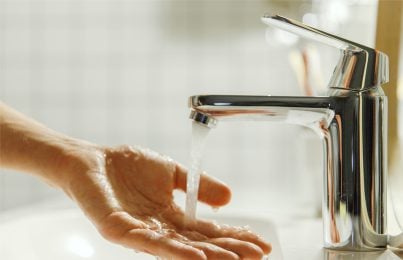Smart Winterizing Solutions: 5 Approaches to Guard Your Pipes in Cold Weather
Smart Winterizing Solutions: 5 Approaches to Guard Your Pipes in Cold Weather
Blog Article
Everybody maintains their own unique opinion on the subject of Winterizing Your Pipes.

All homeowners that live in pleasant climates must do their ideal to winterize their pipelines. Failure to do so can mean catastrophe like icy, split, or ruptured pipes.
Turn On the Faucets
When the temperature level drops as well as it seems as if the frigid temperature level will certainly last, it will aid to activate your water both inside your home as well as outdoors. This will keep the water flowing with your plumbing systems. Furthermore, the motion will certainly reduce the cold process. Notably, there's no demand to turn it on full force. You'll wind up losing gallons of water this way. Rather, go for concerning 5 decreases per min.
Open Up Closet Doors Hiding Plumbing
When it's chilly outside, it would certainly be helpful to open up closet doors that are masking your pipes. Doing this small method can keep your pipelines cozy and also limit the potentially hazardous outcomes of freezing temperature levels.
Take Time to Cover Exposed Pipeline
One great and easy hack to heat up freezing pipelines is to wrap them with cozy towels. You can cover them initially with towels. After safeguarding them in position, you can put boiling water on the towels. Do it slowly to allow the towels take in the liquid. You can additionally utilize pre-soaked towels in hot water, simply do not neglect to use safety handwear covers to safeguard your hands from the warm.
Try a Hair Clothes Dryer or Warmth Gun
When your pipes are almost freezing, your trusty hair dryer or warmth gun is a blessing. If the hot towels do not assist displace any kind of settling ice in your pipelines, bowling hot air straight right into them may help. You might finish up damaging your pipelines while attempting to melt the ice.
When Pipelines are Frozen, close Off Water
Switch off the primary water shutoff immediately if you see that your pipelines are totally frozen or practically nearing that stage. You will usually discover this in your cellar or laundry room near the heater or the front wall surface closest to the street. Turn it off today to prevent additional damages.
Don't neglect to shut external water resources, also, such as your hookup for the garden house. Doing this will avoid added water from filling out your plumbing system. Unfortunately, with even more water, even more ice will certainly accumulate, which will ultimately cause burst pipelines. It is best to call a specialist plumber for an evaluation if you are unclear regarding the state of your pipelines this winter months. Taking this aggressive technique can conserve you hundreds of bucks out of commission.
All house owners that live in pleasant environments should do their ideal to winterize their pipelines. Failure to do so can spell calamity like frozen, fractured, or burst pipelines. If the hot towels do not help remove any kind of working out ice in your pipelines, bowling warm air straight right into them might assist. Turn off the main water shutoff immediately if you see that your pipes are completely frozen or almost nearing that phase. With more water, even more ice will pile up, which will eventually lead to rupture pipes.
PREVENT YOUR PIPES FROM FREEZING THIS WINTER
A Leading Cause of Property Damage
When the weather is taking a deep nose dive into the cold dreary days, the risk of your pipes freezing and potentially bursting skyrockets. Unfortunately, during these cold dreary months, burst pipes are the most common denominator for property damage. The pipes that are most at the risk are those that are in areas where it is most cold in your home. For instance, pipes located in interior places such as basements, attics, and your garage. Unfortunately, that doesn’t mean that the pipes running through your cabinets or exterior walls can’t freeze. Good news, however, is that you can do things to help prevent pipes from freezing.
How to Prevent Pipes From Freezing
Once the temperature starts to drop during the winter, you should be taking the proper measures needed to ensure that your pipes stay warm and that there is circulation of water through them. Some steps that experts may recommend could go against your better judgement when it comes to saving water and heat. However, it would go without saying that when expenses are compared, damaged pipes could put a bigger dent in your wallet than a water bill.
What Can I Do?
Keep your garage door closed. This is very important, especially if you have water supply lines running through your garage. Open your kitchen and bathroom cabinets to allow warm air to circulate through them. Allow air circulation throughout your home. Keeping the interior doors open will once again allow the warm air to circulate inside your home. Ensure your thermostat is running the same temperature throughout the night and day. If you plan to be away from home during the cold months, set your temperature no lower than 55° F. This should provide enough heat to keep the pipes warm and prevent any remaining water inside the pipes from freezing. For more of a long-term solution, add insulation to attics, basement, and other crawl spaces around your home. By allowing your faucet to drip, it will alleviate pressure in the system. This is important because the pressure that is created between the blockage and the faucet can potentially cause the pipes to burst. Allowing the faucet to drip will prevent the pressure from building up, therefore keeping the pipes from bursting. Seal any cracks, openings, and crawl spaces around your home to prevent cold air from coming inside. This keeps your pipes-not to mention your home-warmer and less susceptible to issues caused by freezing temperatures. For the pipes in your home that are easily accessible, applying electrical tape to them might prevent them from freezing over. This is a quick fix, as you can apply the tape directly to the pipe. There are two options for heating tapes. One turns on and off by itself when it senses heat is needed. The other type of heating tape needs to be applied when heat is needed and removed when not necessary. If you have exposed pipes in your home, you can check this website to take a look at a few options that would be available at a shop near you.

I'm very interested in Winterizing Your Pipes and I'm hoping you enjoyed the entire piece. Do you know about somebody else who is excited about the subject? Be sure promote it. Thank you so much for taking the time to read it.
Click Here To Find Out More Report this page